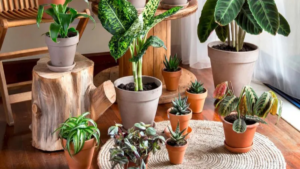Explore the diverse world of non-flowering plants, from ferns and mosses to conifers. Learn about their unique life cycles and importance.
Introduction: Non-flowering Plants
In the vast and diverse world of plants, there exists a captivating realm that often goes unnoticed – the realm of non-flowering plants. These enigmatic organisms, which predate the emergence of their more showy counterparts, the flowering plants, offer a glimpse into the ancient and intricate tapestry of life on our planet.
As a reader in the United States, you may be familiar with the vibrant blooms and lush foliage of the flowering plants that grace our gardens and landscapes. However, the non-flowering plants, with their unique adaptations and evolutionary histories, deserve equal attention and appreciation. From the delicate fronds of ferns to the towering grandeur of conifers, these plants have much to offer in terms of beauty, function, and environmental significance.
In this comprehensive guide, we will embark on a journey to uncover the enchanting world of non-flowering plants. We’ll delve into their diverse classifications, explore their remarkable features, and discover the ways in which they enrich our lives and ecosystems. Whether you’re a nature enthusiast, a gardener, or simply someone curious about the natural world, this post will provide you with a deeper understanding and newfound appreciation for these captivating botanical wonders.
What are Non-flowering Plants?
Non-flowering plants are a diverse group that reproduce without using flowers. Instead of seeds, they primarily produce spores – tiny reproductive units that are like super lightweight “seeds”. Non-flowering plants have been around for millions of years, long before flowering plants evolved.
Types of Non-flowering Plants
Let’s dive into the main categories of non-flowering plants:
- Ferns: These graceful plants are known for their beautiful, often feathery fronds. They come in a wide range of shapes and sizes, thriving in shady, moist environments.
- Examples: Maidenhair fern, Cinnamon fern, Boston fern, Ostrich fern
- Mosses: These soft, green carpets of nature live in diverse habitats – from damp forests to sidewalks. They play a crucial role in soil formation and water retention.
- Examples: Cushion moss, Sheet moss, Haircap moss
- Liverworts: Similar to mosses but with a more flattened appearance. These often overlooked plants are important pioneers in disturbed habitats.
- Examples: Common liverwort, Leafy liverwort
- Hornworts: These plants get their name from their distinctive horn-like structures. They often thrive in moist, disturbed areas.
- Examples: Field hornwort, Smooth hornwort
- Clubmosses: Despite their name, these are not true mosses. They have long, trailing stems and small, scale-like leaves, and were much more abundant in the distant past.
- Examples: Running pine, Shining clubmoss
- Horsetails: With hollow, jointed stems, they have a prehistoric look. Often found in wet environments, some species are considered weeds.
- Examples: Field horsetail, Giant horsetail
- Gymnosperms: This group includes plants that produce seeds but don’t have flowers in the traditional sense. They often have needle-like or scale-like leaves.
- Examples: Conifers (pines, spruces, firs), Cycads, Ginkgo
How Do Non-flowering Plants Reproduce?
Non-flowering plants have a unique way of reproducing. It involves a process called alternation of generations:
- Sporophyte Generation: The mature plant is the sporophyte. It produces spores in structures called sporangia.
- Gametophyte Generation: Spores released from the sporophyte land on suitable ground and develop into a tiny, independent plant called a gametophyte. The gametophyte produces eggs and sperm.
- Fertilization: When conditions are right (often when it’s wet), sperm swim to fertilize the eggs.
- New Sporophyte: The fertilized egg grows into a new sporophyte plant, and the cycle starts again.
Why are Non-flowering Plants Important?
Non-flowering plants may not be as visually striking as their flowering counterparts, but they play a vital role in the overall health and balance of our ecosystems. Here are some of the key reasons why these plants are so important:
Ecological Significance
Non-flowering plants are often the foundation of many ecosystems, providing food and shelter for a wide range of organisms, from insects and small animals to larger herbivores. They also play a crucial role in nutrient cycling, soil formation, and water retention, helping to maintain the delicate balance of their environments.
Evolutionary History
Non-flowering plants are among the oldest living organisms on Earth, with some species dating back hundreds of millions of years. By studying these ancient plants, scientists can gain valuable insights into the evolution of life on our planet and the adaptations that have allowed certain species to thrive for millennia.
Medicinal and Industrial Applications
Many non-flowering plants have been used for centuries in traditional medicine and herbal remedies. Additionally, some species have industrial applications, such as the use of sphagnum moss in horticulture or the use of certain conifer species in the production of lumber and paper.
Aesthetic and Recreational Value
While they may not produce showy flowers, non-flowering plants can be just as visually captivating as their flowering counterparts. Many species are prized for their unique and often striking appearances, making them popular choices for gardens, landscaping, and nature-based recreational activities.By understanding the importance of non-flowering plants, we can better appreciate the rich tapestry of life on our planet and the vital roles that these often-overlooked organisms play in sustaining the delicate balance of our ecosystems.
Exploring the Diverse Characteristics of Non-Flowering Plants
Non-flowering plants come in a wide variety of shapes, sizes, and adaptations, each one uniquely suited to its particular environment. Let’s dive deeper into some of the fascinating features that define these captivating botanical wonders.
Reproduction and Life Cycles
As mentioned earlier, non-flowering plants reproduce through the production and dispersal of spores, rather than the more familiar process of seed formation. This reproductive strategy has allowed these plants to thrive in a wide range of habitats, from the damp, shaded forest floors to the harsh, arid landscapes of deserts.The life cycles of non-flowering plants can be quite complex, often involving alternating generations of haploid and diploid stages. This intricate process ensures the continued survival and adaptation of these species, even in the face of changing environmental conditions.
Adaptations to Diverse Environments
Non-flowering plants have evolved a remarkable array of adaptations that allow them to thrive in a wide range of environments. For example, mosses and liverworts often have specialized structures that help them retain moisture, enabling them to survive in dry or arid conditions. Ferns, on the other hand, are known for their ability to grow in shaded, humid environments, where their delicate fronds can flourish.Conifers, such as pines and firs, have adapted to harsh, mountainous regions through the development of thick, waxy needles that help them conserve water and withstand the elements. These adaptations, along with their ability to reproduce through cones, have allowed conifers to dominate many temperate and boreal forest ecosystems.
Ecological Roles and Interactions
Non-flowering plants play crucial roles in the ecosystems they inhabit, often serving as the foundation for complex food webs and nutrient cycles. Mosses and liverworts, for instance, are important pioneers in the process of soil formation, helping to break down rock and organic matter to create the fertile substrate that supports the growth of larger plants.Ferns and horsetails, on the other hand, are often found in the understory of forests, providing food and shelter for a wide range of invertebrates and small vertebrates. Conifers, with their towering stature and evergreen foliage, offer crucial habitat and resources for a diverse array of wildlife, from birds and mammals to insects and fungi.By understanding the unique characteristics and adaptations of non-flowering plants, we can gain a deeper appreciation for the intricate web of life that sustains our natural world.
Caring for Non-Flowering Plants
Whether you’re a gardener, a nature enthusiast, or simply someone who appreciates the beauty and diversity of the natural world, caring for non-flowering plants can be a rewarding and enriching experience. Here are some tips to help you successfully cultivate and maintain these captivating botanical wonders:
Providing the Right Growing Conditions
Different non-flowering plants have different environmental requirements, so it’s important to research the specific needs of the species you’re interested in growing. For example, mosses and liverworts thrive in moist, shaded environments, while ferns and horsetails prefer well-drained, humid conditions. Conifers, on the other hand, often require well-draining soil and full sun exposure.
Propagation and Cultivation Techniques
Non-flowering plants can be propagated through a variety of methods, depending on the species. Mosses and liverworts, for instance, can be easily propagated by dividing existing colonies or by transplanting individual plants. Ferns and horsetails can be grown from spores, while conifers can be propagated from seed or through vegetative methods, such as cuttings or layering.
Maintaining Optimal Growing Conditions
Once you’ve established your non-flowering plants, it’s important to maintain the appropriate growing conditions to ensure their continued health and vigor. This may involve regular watering, providing adequate light, and protecting the plants from pests and diseases.
Incorporating Non-Flowering Plants into Your Landscape
Non-flowering plants can be a beautiful and unique addition to any garden or landscape. Consider incorporating them into shaded areas, rock gardens, or as part of a naturalistic planting scheme. Their diverse forms and textures can add depth, interest, and a sense of timelessness to your outdoor spaces.By following these tips and embracing the unique characteristics of non-flowering plants, you can cultivate a thriving and sustainable garden or landscape that celebrates the rich diversity of the natural world.
What are some non-flowering plants that are easy to care for?
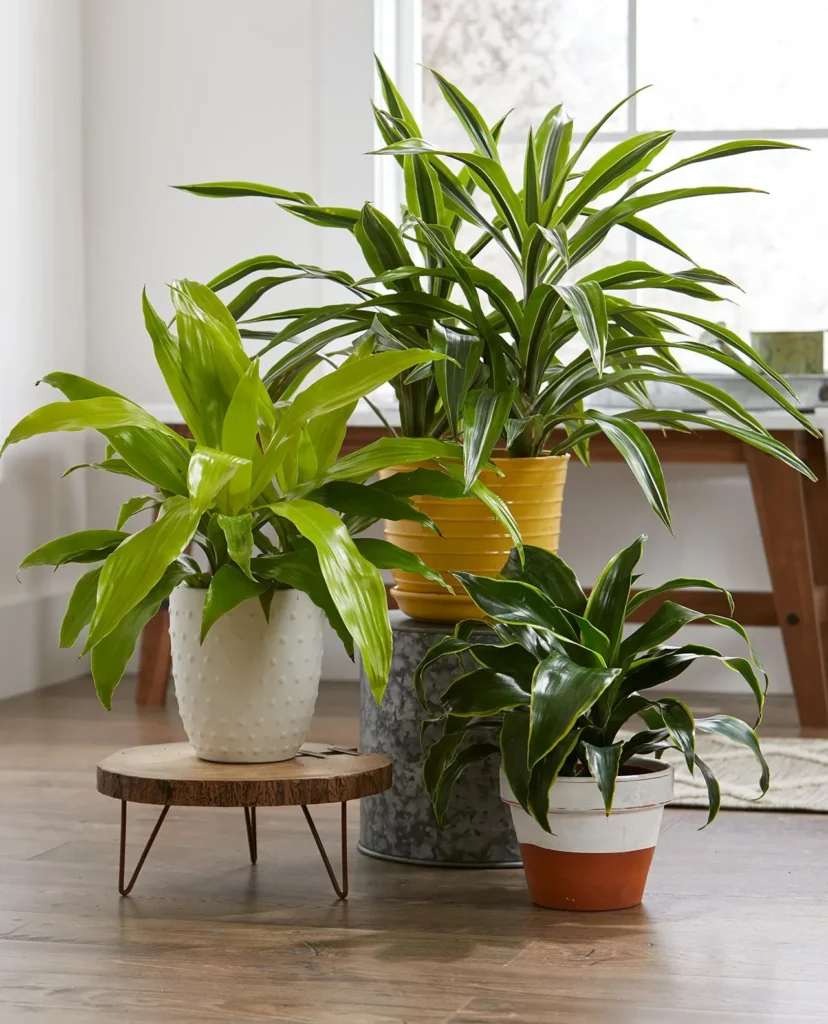
Based on the search results, here are some non-flowering plants that are easy to care for:
- Snake Plant (Sansevieria trifasciata)
- Tolerates low to bright light and can go for weeks without water, making it a great low-maintenance option.
- Pothos (Epipremnum aureum)
- An easy-care trailing vine that can tolerate low light and infrequent watering.
- ZZ Plant (Zamioculcas zamiifolia)
- Has leathery leaves that make it very drought-tolerant and low-maintenance.
- Peperomia
- A diverse group of small, waxy-leaved plants that are easy to care for and tolerate low light.
- Succulents like Haworthia (zebra plant) and Living Stones (Lithops)
- Require infrequent watering and can thrive in bright, indirect light.
- Dracaena (corn plant)
- Tolerates low light and only needs watering every few weeks.
- Ponytail Palm (Beaucarnea recurvata)
- Can store moisture in its trunk-like stem, making it drought-tolerant.
The search results highlight that these non-flowering plants are easy to care for, requiring minimal watering and able to tolerate a range of lighting conditions, making them great options for forgetful or beginner gardeners.
What are some non-flowering plants that are good for beginners?
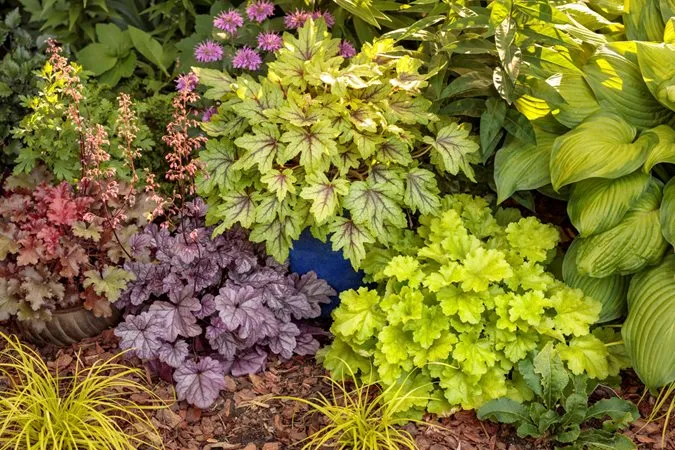
Based on the search results provided, here are some non-flowering plants that are good for beginner gardeners:
- Snake Plant (Sansevieria trifasciata)
- Tolerates low to bright light and can go for weeks without water, making it a great low-maintenance option.
- Pothos (Epipremnum aureum)
- An easy-care trailing vine that can tolerate low light and infrequent watering.
- ZZ Plant (Zamioculcas zamiifolia)
- Has leathery leaves that make it very drought-tolerant and low-maintenance.
- Peperomia
- A diverse group of small, waxy-leaved plants that are easy to care for and tolerate low light.
- Succulents like Haworthia (zebra plant) and Living Stones (Lithops)
- Require infrequent watering and can thrive in bright, indirect light.
- Dracaena (corn plant)
- Tolerates low light and only needs watering every few weeks.
- Ponytail Palm (Beaucarnea recurvata)
- Can store moisture in its trunk-like stem, making it drought-tolerant.
The search results highlight that these non-flowering plants are easy to care for, requiring minimal watering and able to tolerate a range of lighting conditions, making them great options for beginner gardeners.
How to choose the right non-flowering plant for your home?
Based on the search results provided, here are some tips for choosing the right non-flowering plant for your home:
- Consider the lighting conditions:
- Identify the lighting in the areas where you want to place the plants. Look for spots with bright, indirect light, low light, or a mix.
- Choose plants that are well-suited to the available light levels, such as snake plants and pothos for low light, or succulents like Haworthia for bright light.
- Assess your watering habits:
- Determine how often you are able to water your plants. Some non-flowering plants, like snake plants and ZZ plants, are very drought-tolerant and can go weeks without water.
- Select plants that match your watering frequency, such as succulents and cacti for infrequent waterers, or ferns and Peperomia for those who can water more regularly.
- Prioritize low-maintenance options:
- Look for non-flowering plants that are known to be easy to care for, such as snake plants, pothos, ZZ plants, and Peperomia. These tend to be forgiving of neglect and require minimal effort.
- Consider the size and growth habits:
- Evaluate the available space and choose non-flowering plants that will fit well, whether that’s a trailing vine, a compact succulent, or a larger, upright plant like a Dracaena.
- Consider how quickly the plant may grow and whether it will need regular pruning or repotting.
- Prioritize pet-friendly options:
- If you have pets, look for non-flowering plants that are non-toxic, such as snake plants, pothos, and Peperomia. Avoid plants that may be harmful to animals.
By considering these factors, you can select the right non-flowering plant that will thrive in your home environment and match your gardening skills and lifestyle.
What are the benefits of having non-flowering plants in your home?
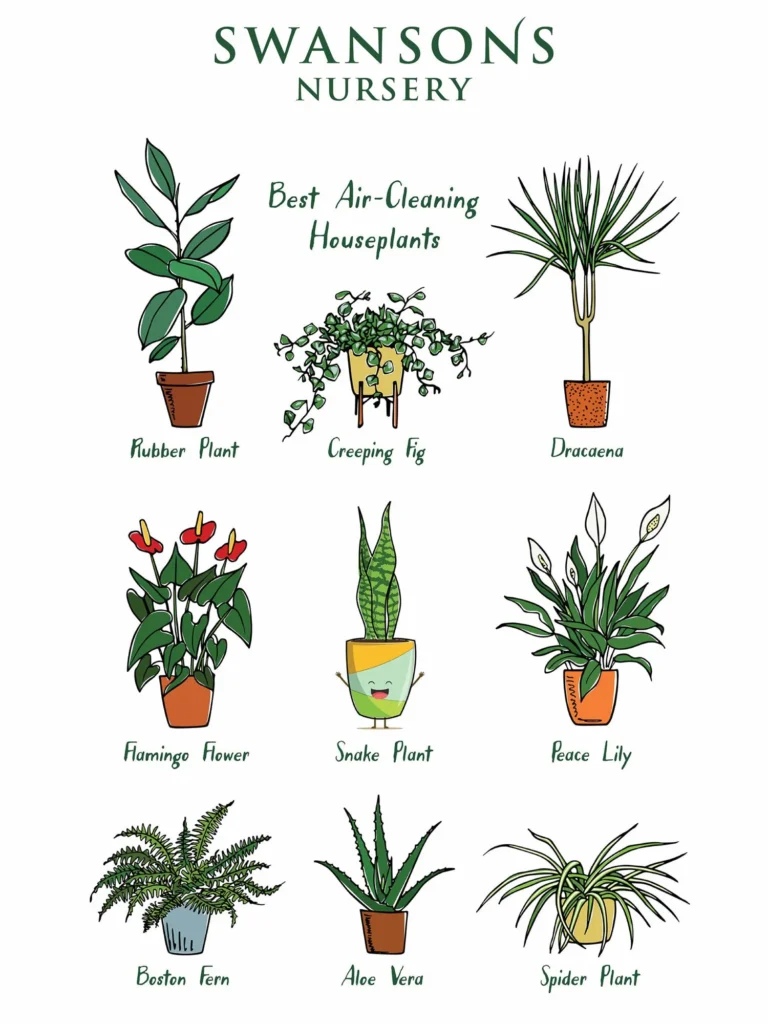
Based on the provided sources, the benefits of having non-flowering plants in your home include:
- Improving Indoor Air Quality:
- Non-flowering plants can help purify the air by absorbing indoor pollutants like formaldehyde, benzene, and trichloroethylene, making the air fresher and safer. They recycle carbon dioxide through photosynthesis, assisting in breathing and providing oxygen. Plants like orchids and succulents are particularly effective in cleaning the air.
- Increasing Humidity:
- Non-flowering plants release moisture through transpiration, increasing the humidity in the air. This can be beneficial, especially during dry winter months, as it helps decrease the likelihood of dry skin, common colds, and sore throats.
- Boosting Psychological Well-being:
- Having non-flowering plants in your home can generate happiness, increase concentration, memory retention, and work quality. Studies have shown that being around plants can increase happiness, reduce stress and anxiety, and improve overall well-being. Plants can also help in boosting moods, productivity, creativity, and focus.
- Aesthetics and Visual Appeal:
- Non-flowering plants add beauty and interest to indoor spaces, providing a natural and visually appealing element to your home decor. They can soften lines, fill space, improve traffic flow, reduce noise, and create a more appealing environment.
- Therapeutic Effects:
- Working with non-flowering plants can be therapeutic, aiding in reducing stress levels, sharpening attention, and promoting recovery from illness or surgery. Horticultural therapy has been shown to be beneficial for mental health, with some medical clinics even prescribing potted plants to patients with depression or anxiety symptoms.
- Enhancing Concentration and Productivity:
- Studies have demonstrated that being around non-flowering plants can increase concentration, memory retention, and work performance. The presence of plants in workspaces has been linked to improved staff well-being, reduced sick-leave absences, and enhanced work quality.
In conclusion, incorporating non-flowering plants into your home can have a multitude of benefits, ranging from improving air quality and humidity to boosting psychological well-being, enhancing aesthetics, and even aiding in concentration, productivity, and recovery. These plants not only add a touch of nature to indoor spaces but also contribute significantly to creating a healthier and more pleasant living environment.
What are some non-flowering plants that require minimal sunlight?
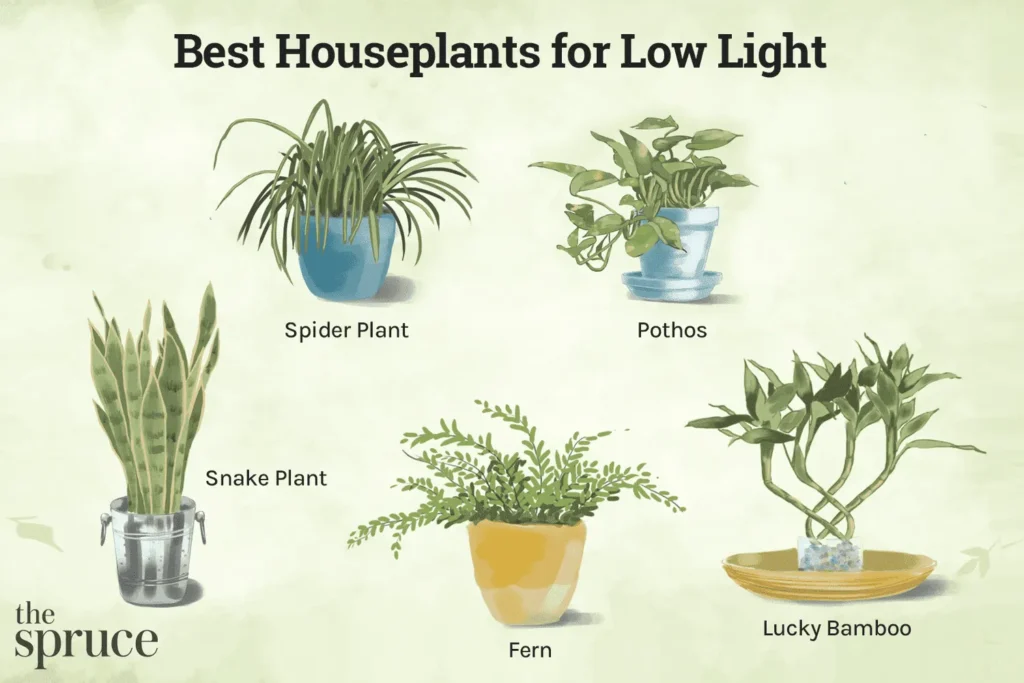
Based on the search results provided, here are some non-flowering plants that require minimal sunlight:
- Snake Plant (Sansevieria trifasciata)
- Can tolerate low to bright light conditions and is very drought-tolerant.
- ZZ Plant (Zamioculcas zamiifolia)
- Thrives in low light environments and is known for its leathery, waxy leaves.
- Chinese Evergreen (Aglaonema)
- Tolerates low light conditions and can even grow under regular light bulbs.
- Cast Iron Plant (Aspidistra elatior)
- Grows well in very low light and is considered one of the most shade-tolerant plants.
- Pothos (Epipremnum aureum)
- An easy-care trailing vine that can tolerate low light conditions.
- Peperomia
- A diverse group of small, waxy-leaved plants that can thrive in low light.
- Monstera (Monstera deliciosa)
- Also known as the “Swiss Cheese Plant,” it can grow in any level of light.
The search results highlight that these non-flowering plants, such as snake plants, ZZ plants, Chinese evergreens, and pothos, are well-suited for low-light indoor environments, making them great options for beginner gardeners or those with limited access to direct sunlight.
How often should i water non-flowering plants?
Based on the information provided in the search results, here are some guidelines for how often to water non-flowering plants:
- Succulents and Cacti:
- Succulents like snake plants, ZZ plants, and living stones only need to be watered every few weeks, especially during the winter months when they are semi-dormant.
- Water succulents when the soil is completely dry, usually every 2-4 weeks.
- Pothos and Other Trailing Vines:
- Pothos and other trailing vines like philodendrons can tolerate infrequent watering, about once a week or every 1-2 weeks.
- Dracaena and Other Upright Plants:
- Plants like the corn plant (Dracaena) only need to be watered every 2-4 weeks, depending on the season.
- Ferns and Tropical Plants:
- Plants from more humid, tropical environments like ferns and Monstera may need to be watered more frequently, about once a week during the growing season.
- Seasonal Adjustments:
- Water needs generally increase during the spring and summer growing season and decrease in the winter when plants are semi-dormant.
- Adjust watering frequency based on factors like plant type, pot size, light exposure, and environmental conditions.
The key is to water thoroughly when the soil is dry, but avoid overwatering. It’s better to underwater than to overwater most non-flowering plants. Monitor your plants’ appearance and soil moisture to determine the optimal watering schedule for your specific situation.
Conclusion
In this comprehensive guide, we’ve embarked on a journey to uncover the enchanting world of non-flowering plants. From the delicate fronds of ferns to the towering grandeur of conifers, these captivating botanical wonders offer a glimpse into the ancient and intricate tapestry of life on our planet.
As we’ve discovered, non-flowering plants play a vital role in the overall health and balance of our ecosystems, serving as the foundation for complex food webs, nutrient cycles, and soil formation. Their unique adaptations and evolutionary histories also provide valuable insights into the development of life on Earth.
Whether you’re a nature enthusiast, a gardener, or simply someone curious about the natural world, we hope that this guide has inspired you to explore and appreciate the diverse and fascinating realm of non-flowering plants. By understanding their characteristics, adaptations, and ecological significance, we can all play a role in preserving and celebrating these captivating botanical wonders for generations to come.
So, let’s continue to uncover the secrets of the non-flowering plant world, and discover the beauty, wonder, and importance that these often-overlooked organisms hold within the grand tapestry of life.
FAQs:
Flowering plants, also known as angiosperms, produce flowers and seeds, while non-flowering plants, or cryptogams, reproduce through spores rather than seeds.
Non-flowering plants play crucial ecological roles, such as providing food and shelter for a wide range of organisms, contributing to nutrient cycling and soil formation, and serving as the foundation of many ecosystems. They also have historical, medicinal, and aesthetic value.
The major groups of non-flowering plants include mosses, ferns, horsetails, liverworts, and conifers.
Non-flowering plants reproduce through the production and dispersal of spores, which are tiny, lightweight reproductive units that are spread by wind, water, or other means.
Yes, many non-flowering plants can be successfully cultivated in gardens and landscapes, provided they are given the appropriate growing conditions. Mosses, ferns, and some conifers are particularly well-suited for this purpose.
Yes, many non-flowering plants have been used in traditional medicine and herbal remedies for centuries, and some species also have industrial applications, such as the use of sphagnum moss in horticulture or the use of certain conifer species in the production of lumber and paper.
